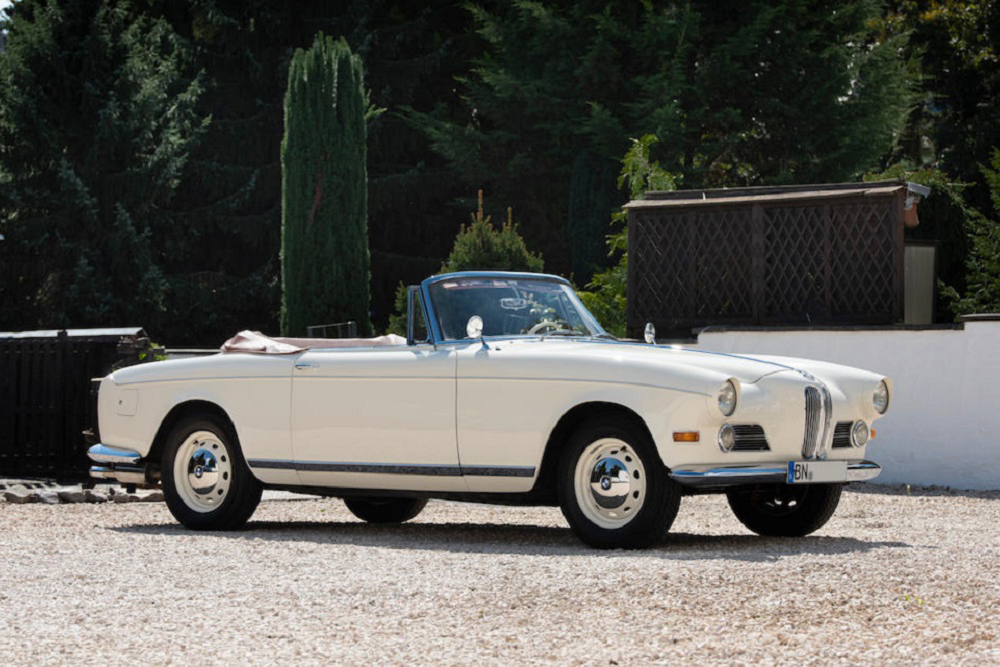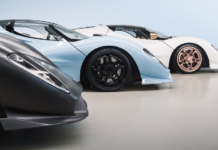“It was evident that the factory had yet another classic in its own time as they had with the 328 two decades earlier. The wholly individual coupé or convertible was a true follower of the 328 traditions… one of the very few non-Italian body designs to be assured of classic status from the ‘fifties…” – Sloniger and Von Fersen on the BMW 503, German High Performance Cars, 1894-1965.

Chassis no. 69264
•One of only 138 produced
•Collectible V8-engined BMW cabriolet
•Professionally restored in 2002 by Veteranen Laden
•Registered in Germany
At the end of WW2, BMW was in a much worse state than Mercedes-Benz in Stuttgart because one of its major plants – the old Dixi works at Eisenach in Saxony – was within the Russian Zone and would soon be cut off from the West behind the ‘Iron Curtain’. Nevertheless, manufacture of what would later be called ‘EMW’ cars recommenced at Eisench under Russian control almost as soon as hostilities ceased. BMW’s Munich factory though, had been badly damaged by Allied bombing and for the next few years a much-reduced workforce struggled on producing household utensils, agricultural machinery, bicycles and railway brake sets. It would be 1948 before deliveries of BMW motorcycles restarted and another four years before the first true BMW car of the post-war era emerged.
BMW recommenced car production in 1952 with the introduction of the 501-luxury saloon, a strange choice for an impoverished country still recovering from the ravages of war. The 501 had been announced in 1951 and first appeared with a development of the company’s pre-war six-cylinder engine before gaining a much-needed performance boost, in the form of a 2.6-litre V8, in 1954. Designed by Alfred Böning, this new power unit had been inspired by American V8s but was constructed of aluminium alloy rather than cast iron. Towards the end of 1955 a 3.2-litre version was introduced and the big saloon’s model designation changed to ‘502’.
Clearly, this new state-of-the-art V8 had considerable potential as a sports car engine. Sales Director Hanns Grewenig had been pressing for a V8-engined sports car for some time but it was not until Mercedes-Benz introduced the 300SL that the project was given the green light. BMW was encouraged by Austrian-born entrepreneur Max Hoffman, at that time the US importer of various European makes, who knew just the man to style the car: Count Albrecht von Goertz, an independent industrial designer who had worked for the legendary Raymond Loewy on the latter’s trend-setting Studebakers. Designer of everything from fountain pens to furniture, Goertz had never before styled an entire car and would not work for BMW again until the 1980s, by which time he had produced another classic automobile: the Datsun 240Z.

Goertz was commissioned to produce two different designs, both of which debuted in prototype form at the Frankfurt Auto Show towards the end of 1955. The more conservative of the two – the 503 – retained the 502 saloon’s 2,834mm wheelbase chassis, suspension and centrally mounted, column-change gearbox, while the 507 was built on a much shorter wheelbase, which necessitated attaching the gearbox directly to the engine. (The Series II 503 – introduced in 1957 – used the 507-type engine/transmission arrangement complete with floor-mounted change.) As installed in the alloy-bodied 503, the 3.2-litre V8 produced 140bhp, which was good enough for a top speed of 118mph (190km/h). With its long bonnet, 2+2 seating and generously sized boot, the 503 looked every inch the elegant Grande Routière. Even Pinin Farina was impressed, declaring it to be the most beautiful car in the show. Had the 507 not debuted at the same time, it would no doubt have also been the most memorable.
BMW high-performance, V8-engined cars of the 1950s attracted a small but discerning clientele, including some very well known names from the motor sporting world. Expensive and exclusive, the 503 was built both as a closed coupé and a convertible, only 206 of the former and 138 of the latter being delivered between 1956 and 1960.
Chassis number ‘69264’ was fully restored to concours standard in 2002 by Veteranen Laden of Oberhausen, Germany, whose plaque is fixed to the car, and still presents in excellent condition today. Accompanying documentation consists of restoration photographs, sundry minor bills, and old/current German registration papers.
Report by bonhams.com










